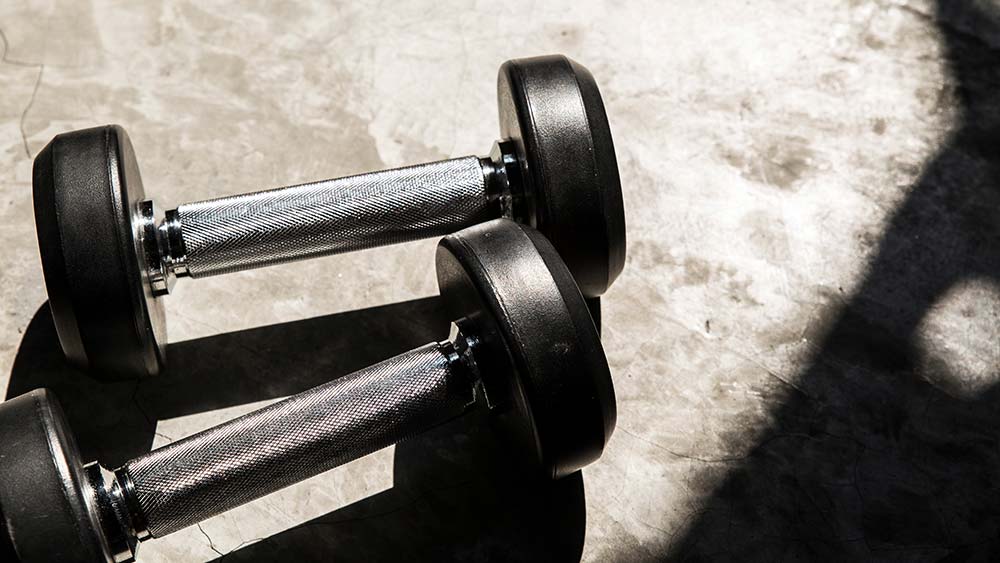
Improving strength doesn’t mean going to the gym or blocking out workout time, unless you really want to.
I was introduced to strength training in my teens by football coaches who used the standard methodologies of the time to help make us bigger and stronger. After I graduated from high school, I continued this program, working out in the weight room at the University of Colorado, where I put on 30 pounds of bulk pumping iron with some guys from the football team.
At some point I realized that though I could bench press 240 pounds free, I couldn’t run anywhere. In fact, I could barely move. I decided to take up distance running and change my weight-lifting regime from high-weight, low reps to high reps, low weight. This seemed to work out OK for maintaining muscle tone, especially as I peeled off the bulk — I went from 190 to 160 pounds in a few months — but I can’t say it made me very strong.
Over the years I’ve dabbled in all sorts of resistance training, trying to maintain my strength as I approach what I jokingly call “advanced middle age.” When Dr. Phil Maffetone shared his Slow Weights program with me several years ago, it struck home because it was very close to what I had arrived at intuitively after decades of developing my own personal strength program.
What was even more supportive, was that Phil put some actual science and numbers to what I was doing and this helped me to fine-tune and structure my non-program program. It all came together in his new book Get Strong, which I edited.
Today, I keep a cheap 1970s barbell with Montgomery Ward plastic-covered cement weights on my front porch. It’s the same weight set I had at home when I was 17. With these weights I can do almost everything I need to do. In addition, I do some pull-ups and pushups, largely following the program outlined in Get Strong.
As a cross-country and track coach at my local high school, I also sometimes work out with the kids in the school weight room, which obviously has much better equipment. There I’ve introduced the concept of slow weights, often telling my athletes who seem confused by the six reps and three-minute rest intervals, “We aren’t bulking up for football season. We’re getting stronger!”
With slow weights the recovery time is not a factor, and nobody should get sore. I keep it simple and relatively free-form with the kids. It’s basically the same plan I use. Typically I have them choose between three to five of the following activities starting with one set of six reps, using weights about 80% of max, and gradually increasing to three sets per session.:
- Bicep curls with dumbells.
- Military press with dumbbells.
- Bench press with dumbbells.
- Pullups (many kids can only do one or three, but for those who can do more I have them go a couple less than their max).
- Pushups (six each, regular, narrow and wide).
- Dead lifts*.
- Squats*.
* I discourage a lot of dead lifts and squats during the competitive season just because our workout and event schedule is tight and I want their legs fresh.
As for myself, at home I continue my slow weights training on almost a daily basis. It’s easy with the old barbell on the front porch. I just pick it up and do some dead lifts or curls whenever I feel like it. I mix it up so I don’t get bored. Some days it’s dead lifts and some days it’s curls. Some days it’s one set of everything, spaced out over the course of a day.
It depends on how I feel day to day — and my own intuition. Over the course of a week or month, I’ve lifted more weight than most gym rats do with regular sessions. Since this method does not break down muscle fiber, it does not require a lengthy recovery period. I am constantly working to improve my strength but rarely am I actually “working out.”
But your strength program doesn’t have to be even this structured. The deadlift does more for your total body strength than any other. As Phil says, you can begin to make improvements with just one movement — one rep.
If you’re like me, you don’t have a lot of free time to go to the gym, and you’re running out of time to improve your strength. For more information about how you can do this without going to a gym or following a highly structured workout plan, I encourage you to check out Phil’s book — Get Strong.
Hal Walter is an MAF Founding Coach and Dr. Phil Maffetone’s senior editor.









